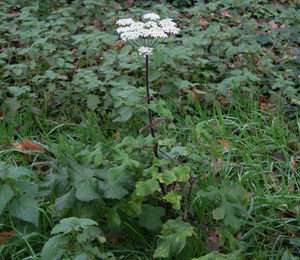Extreme autumn temperatures cause unseasonable flowering in the Netherlands

Observers in the Netherlands reported that more than 240 wild plant species were flowering in December, along with more than 200 cultivated species. According to biologist Arnold van Vliet of Wageningen University, this unseasonable flowering is being caused by extremely high autumn temperatures.
The mean autumn temperature in 2006 was 13.6°C, which is 3.4°C above the long-term average. It was even 1.6°C warmer than in 2005, which was previously the warmest autumn since 1706, when records were first kept. It is very likely that other European countries also experienced unseasonable flowering due to the high temperatures. This information emerged from a unique, large-scale observation campaign conducted by volunteers during the first 15 days of the month.
The flowering observation campaign was coordinated by the Dutch phenological network Natuurkalender (Nature’s Calendar), which comprises organisations such as Wageningen University, the FLORON Foundation and the popular nature and wildlife radio programme Vroege Vogels (Early Birds). After the radio programme requested its listeners to make observations of plants in flower on the 10th of December, nearly 2000 observations were submitted by 280 volunteers via the Nature’s Calendar website.
The aim of the observation campaign was to determine the effects of the extreme weather conditions in the Netherlands during the second half of 2006. This year included not only the warmest July and September on record, but also the wettest August. Temperatures were far above normal: 3.7°C higher in September, 3.3°C higher in October and 3°C higher in November. The first 17 days of December were even more extreme, registering 4.2°C above normal. For the entire autumn the average temperature was 3.4°C above the long-term average and even 1.6°C warmer than the autumn of 2005, which was previously the warmest on record in the Netherlands.
An analysis of the observations revealed that over 240 wild plant species were observed to be flowering during the first 15 days of December. Examples of such species include Cow parsley, Sweet violet and Evening star. According to scientists at Wageningen University, only 2% of these plants normally flower in the winter, while 27% end their main flowering period in autumn and 56% before October. In addition, the observers reported that more than 200 garden plants were flowering in December.
According to this data, the unusually high temperatures are clearly lengthening the growing season. Leaf colouring and leaf fall of species like Oak and Beech occurred two to three weeks later than the average during the first half of the 20th century. For species such as Hazel, the flowering season began at least one month earlier than normal. Some Rhododendron varieties and Japanese Cherry also flowered at the beginning of December, while they previously flowered at the end of January or February. A complete overview of all the wild plants observed can be found at www.natuurkalender.nl .
Van Vliet warns that the ecological consequences of the extreme temperatures and the longer growing season remain largely unknown. Next year will be an important year for ecologists to identify the impacts on plants and animals. The high temperatures in 2006 are likely to increase the numbers of warmth-loving species even further, a trend which has been observed for some time.
Source: Wageningen University


















